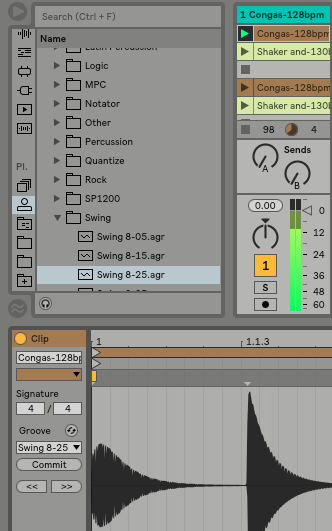Here’s a way to help overcome the “mechanical” sound of traditional quantization
Quantizing MIDI notes to precise rhythmic values on a grid can sound “mechanical.” This isn’t necessarily a bad thing, particularly with techno, electro, etc. But for musical genres that aren’t quite as rigid in terms of tempo, overly tight quantization can sound stiff. Enter groove quantization: instead of quantizing to a grid, you can call up a particular groove—for example, a hi-hat riff played by a real drummer, or a hand-percussion part—and quantize to that instead, forcing the MIDI notes to conform to the beats in the groove.
Different programs handle this differently; some come with a bunch of preset grooves (like shuffles, humanized percussion grooves, swing, and grooves that lag or lead the beat), others let you extract grooves from existing audio or MIDI clips, and still others combine both options.
The image above shows Ableton Live, which is a program that makes it easy to apply grooves to clips for different feels—you drag and drop the groove from the browser (upper left) on top of a clip. In fact, this might be time for a bonus tip—DAWs come with documentation! It may be an intimidating amount of info, but search the documentation for “groove,” and see what shows up. It might be easier than you think to add a more human touch to your music.
